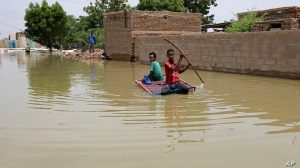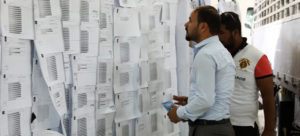Hybrid UN-Cambodia court has been criticised for its slow pace and lack of convictions, but experts say it forced the country to confront the horrors of its past.
Correction
28 Apr 2022
This story has been corrected to show that the only ongoing case at the court involves an appeal by Khieu Samphan who was convicted in 2018.
After 19 years, hundreds of millions of dollars and just two successful convictions, the Khmer Rouge Tribunal in Phnom Penh is approaching its end.
The only case now ongoing for atrocities committed in Cambodia by Pol Pot’s brutal regime is an appeal by Khieu Samphan, who was convicted in 2018. The country’s youthful population is anxious to move on from a national identity characterised by a genocide it does not remember, while an ageing political elite is keen to limit chains of accountability before they edge too close to home.
Cambodia’s National Assembly, where the ruling party has every seat, has voted unanimously to wind up the court’s activities by the end of this year.
But despite the difficulties that dogged its progress – from funding to political obstruction to the death of defendants before verdicts could be reached or charges laid – the court forced the horrors of the Khmer Rouge out into the open and will have a profound effect on future fights for justice around the world.
Not only as an invaluable example for future study and prevention, as Youk Chhang, director of the Documentation Centre of Cambodia (DC-CAM) and a survivor of the Khmer Rouge, puts it. But also, as former chief of investigations for the tribunal Craig Etcheson explains, because it brought into sharp focus the immense challenge of pitting a slow-moving, technically-minded judicial establishment against an experienced, tenacious leader who is determined to politicise the process.
The Extraordinary Chambers in the Courts of Cambodia (ECCC), known informally as the Khmer Rouge Tribunal, was set up in 2003 by the Cambodian government and the United Nations but was designed to have judicial and political independence from both.
Its purpose was to identify and prosecute those responsible for atrocities committed by the Khmer Rouge, the ultra-Maoist political party led by Pol Pot, whose rebel forces seized control of Cambodia from 1975 to 1979. Allegations included mass murder, torture, forced marriages and the genocide of Cambodia’s Cham and ethnic Vietnamese minorities.
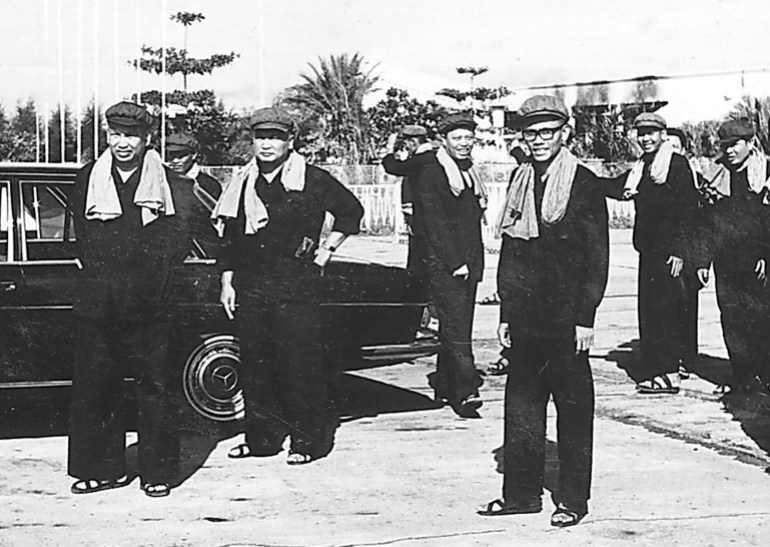
During the Khmer Rouge’s brief time in power, Cambodia’s educated, professional classes were eviscerated, the cities emptied, and the population redistributed to collective farms and rural construction projects. In just four years, approximately two million Cambodians were either killed or died of starvation, overwork and disease.
“What would ‘justice’ look like when we are talking about two million people killed, millions of families ripped apart, and an entire culture whiplashed to within inches of its very existence?” asked Etcheson. “My expectation would be that there is no kind of justice which would satisfy everyone in the wake of such catastrophic crimes.”
Yet many have tried.
Ever since senior Nazi commanders were tried (and hanged) at Nuremberg in 1946, international criminal tribunals have been set up to prosecute war criminals everywhere, from Japan to Rwanda and Iraq.
Some, like the International Criminal Tribunals for Yugoslavia and Sierra Leone, were run by the UN. Others, including atrocities committed in Uganda, Palestine and Myanmar, are being investigated by the International Criminal Court (ICC). Myanmar is also facing a genocide case at the International Court of Justice (ICJ).
‘Hybrid’ court
What makes the ECCC unusual is that it is a ‘hybrid’ court: a joint project between the UN and the Cambodian government.
The UN and Cambodian legal teams work in parallel, and judgements are made in accordance with Cambodia’s laws. The idea was to give the court’s verdicts legitimacy in Cambodia, avoiding the kind of accusations levelled at many UN and ICC courts in the past – that they are neo-colonial interventions imposing Western perspectives on sovereign states, for example – and ensuring that those prosecuted would actually go to jail.
It also placed greater emphasis on victim testimonies and community dialogue, improving on earlier models like Yugoslavia, where the UN-run court failed even to release transcripts and press releases in Serbian or any other local languages for the first six years of its operations.
But the hybrid model also meant the court has had to contend with the interests of a country rated 127 out of 128 for the rule of law. This includes sticking to cases sanctioned by the Cambodian side – and by extension, the country’s all-powerful prime minister, Hun Sen, himself a former Khmer Rouge cadre.
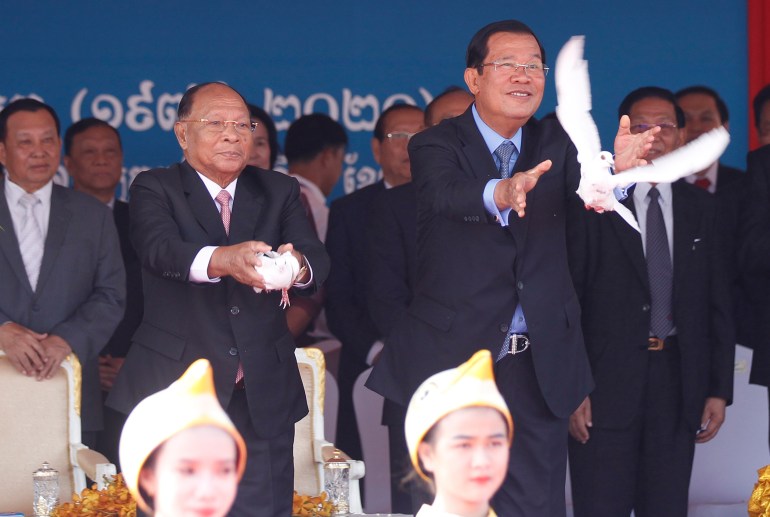
In 2011, a group of UN lawyers protested against the decision to drop investigations into two military leaders, accusing senior judges of caving to government pressure and failing to “discharge their legal obligation to ascertain the truth”. In the aftermath, UN Judge Siegfried Blunk and his Cambodian counterpart You Bunleng resigned, citing attempted interference by Hun Sen’s government.
Over the past two decades, the court has brought four cases involving nine individuals to trial.
The first case led to the successful prosecution of ‘Comrade Duch’ (his real name is Kaing Guek Eav), who ran the notorious prison S-21 – a former school building where more than 18,000 men, women and children were tortured into confessing to farcical acts of treason, before being sent for execution in the Killing Fields.
Under the second, Khmer Rouge Chairman Khieu Samphan and ‘Brother Number Two’ – Pol Pot’s second-in-command – Nuon Chea were both convicted in 2018 on genocide charges.
By this time, most architects of the genocide were already dead or too infirm to stand trial.
Pol Pot had died long before, in 1998 and his military chief Ta Mok, nicknamed ‘The Butcher’ for his brutality, died in custody in 2006 before the trials began.
As proceedings dragged on, ‘Brother Number Three’ Ieng Sary died of heart failure before a verdict was delivered. His wife Ieng Thirith, who had served as minister of social affairs under the Khmer Rouge, developed Alzheimer’s disease and was declared unfit for trial. Ao An, charged with crimes against humanity as head of the country’s ‘Central Zone’, died at home in his village in Battambang in 2020, aged 87. Meanwhile, Nuon Chea appealed his conviction before dying in 2019, aged 93, while still awaiting the outcome.
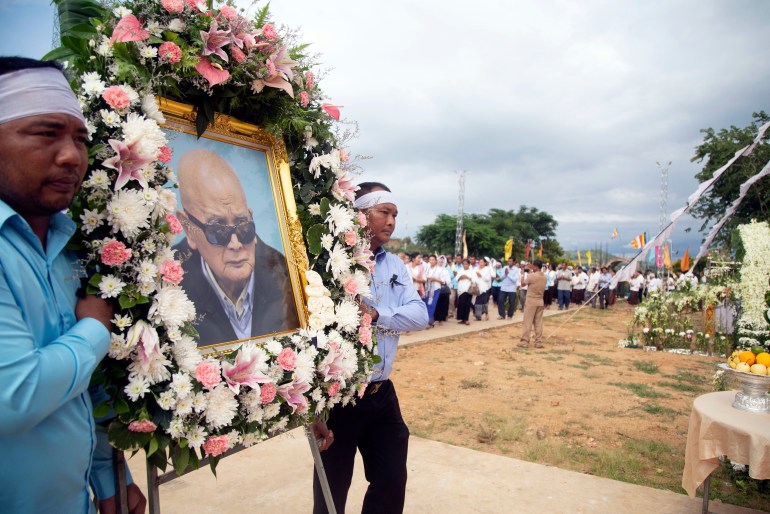
Frustrations mounted when the court dismissed charges against ex-navy commander Meas Muth in December 2021, bringing the third case to a close. Case 4, the last one left, has also fallen apart – charges were dropped against co-defendant Yim Tith in January 2022, and the prosecution has run out of appeals to bring to trial 74-year-old grandmother Im Cheam. Many feel that, even if she had been convicted, it would have been too late for any real justice to be done.
Im Cheam – who allegedly oversaw the deaths of half a million people – has lived out her days surrounded by grandchildren on her farm in Cambodia’s rural northeast.
Political pressure
Almost since its inception, the ECCC has had to contend with increasing pressure from the ruling Cambodian People’s Party (CPP).
Hun Sen initially welcomed the court; prosecuting Pol Pot’s clique for war crimes helped vindicate his leadership after years of being snubbed by an international community that refused to recognise his Vietnam-backed government and insisted on dealing with the Khmer Rouge until the Paris Peace Agreements were signed in 1991.
But Hun Sen’s support was based on the expectation that the court would stick to investigating politically safe targets with no connection to the ruling party, and that just the most senior Khmer Rouge leaders would be brought to trial.
It is not surprising that Hun Sen, a Khmer Rouge commander himself before defecting to Vietnam in 1977, would strive to limit accountability to the very top of the chain of command. But in a country where many survivors live in the same village as former executioners, he may have genuinely feared that the threat of mass trials would undermine Cambodia’s fragile peace.
When UN lawyers tried to broaden their scope, Cambodian judges in the ECCC pushed back and the political elite became less and less cooperative. As Etcheson points out, in the first two cases, the government cooperated fully in surrendering the accused to the court, while “notably failing” to do the same for the other two cases. Another tactic to undermine the tribunal was withholding the salaries of Cambodian tribunal staff in 2013, triggering a strike and temporarily bringing the court’s activities to a halt.
The spectre of political interference has brought criticism, including from Human Rights Watch which described the two successful convictions in 2014 as “too little, too late” and dismissed the court as a “fundamentally flawed” failure. Others are frustrated with the duplicated costs of setting up parallel Cambodian and international systems in one court and rampant corruption in the Cambodian judiciary’s hiring processes.

This included the expectation that those given well-paid jobs at the court would pay bribes to secure their position plus a portion of their salary to their bosses. Demanding that subordinate staff pay up to half of their salaries up the chain of command is a common practice in the Cambodian judiciary, government, military and police, as confirmed by multiple police and diplomatic sources who asked to remain anonymous.
Confirming atrocities ‘for perpetuity’
Despite these headaches, reaching verdicts has been “a transparent exercise,” says former US Ambassador for War Crimes David Scheffer, who was appointed to advise the UN Assistance to the Khmer Rouge Trials in 2012. “Yes, one can find setbacks, but I think the court will stand the test of time.”
While Scheffer acknowledges the court’s “imperfections”, he believes that without it, the Cambodian people would have lost the chance to hold any of the Khmer Rouge’s top figures accountable.
While some may have ultimately evaded trial, he says, the process created a powerful historical record based on publicly presented, rigorously interrogated evidence that will “confirm the atrocities of the Pol Pot regime for perpetuity”. Not only was this the final nail in the coffin for the Khmer Rouge’s credibility back in the late 1990s, says Scheffer, but it should also make it impossible to whitewash their crimes in the future.
Crucially, the court has doubled as a form of truth and reconciliation commission, giving thousands of survivors the opportunity to tell their stories, be heard, and be believed. Engaging so many Cambodian people in this process was no small feat, says Kip Hale, a UN expert on atrocity crimes accountability, who formerly worked for the office of the co-prosecutor at the ECCC. Hundreds of thousands of people spent a day in court, and millions listened or watched on the radio and TV, he says. For Hale, that alone represents time and money well spent.
Or, as Youk Chhang says, “the court has given so much power to the Cambodian people and a sense of ownership over their history.”
For Chhang, the true legacy of the court is its educational value for future generations. Indeed, the trove of evidence and testimony gathered by the court and DC-CAM provides a vital – and easily accessible – Cambodian-language resource of what happened under the Khmer Rouge.
Disagreement over the official narrative means it has received little attention in school history books and few students explore it in depth. Unless they hear stories directly from parents or grandparents, many young Cambodians have little understanding – or interest – in what really took place, says Darathtey Din, a communications and international affairs researcher from Phnom Penh.
While ambivalent about the impact and effectiveness of the court as a whole, Din feels that survivor testimonies play an important role in teaching people about the past and challenging tidy official narratives. “Our education system does not teach us to ask questions,” she says. “I think the younger generation should question why some things are not being said.”


